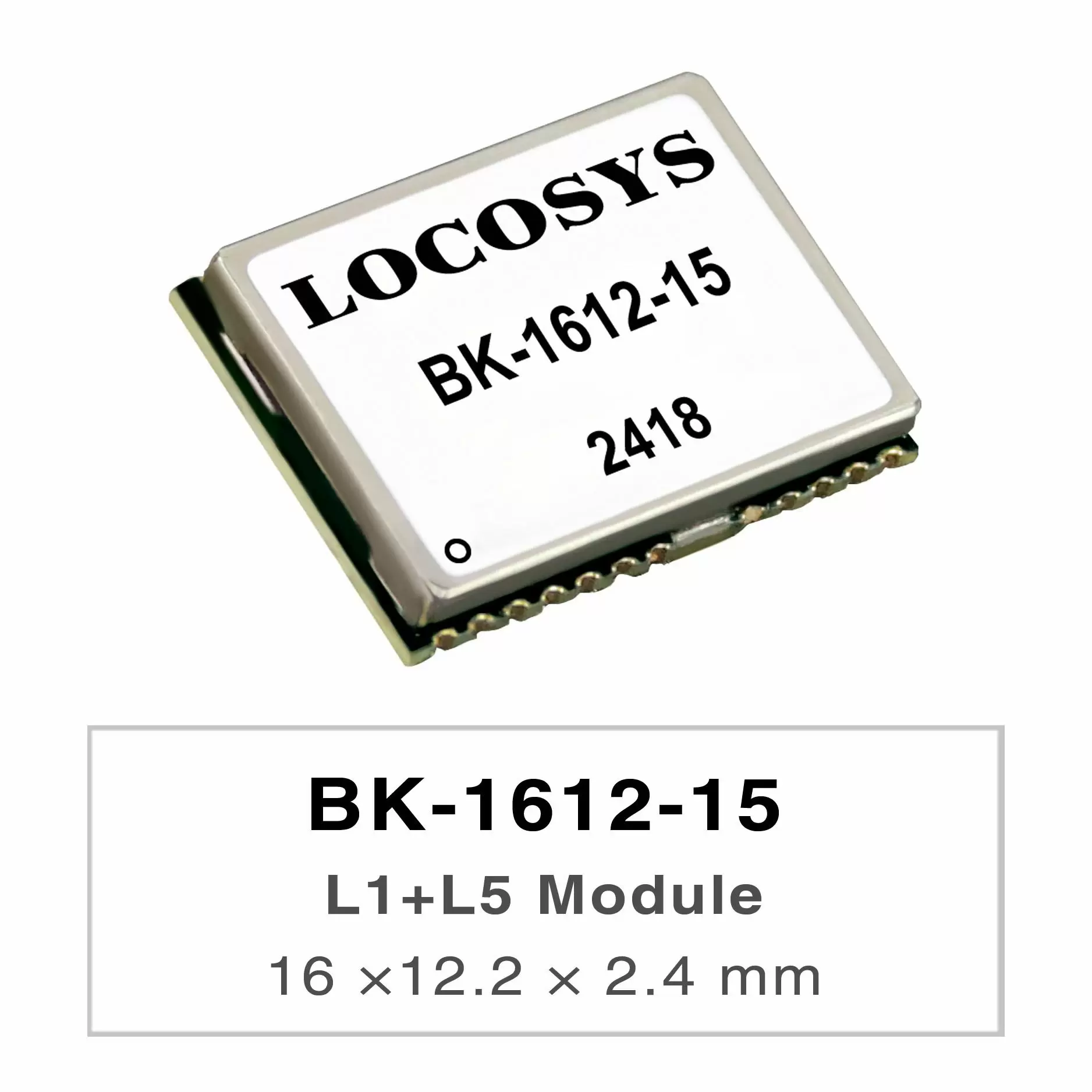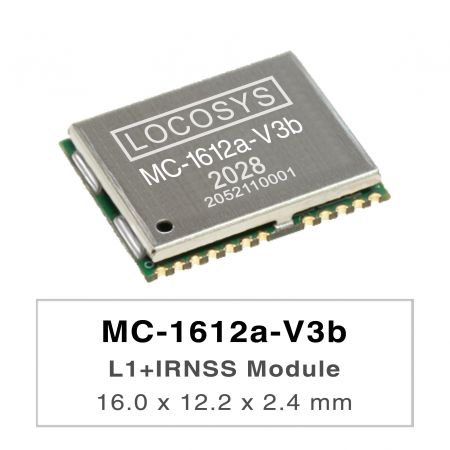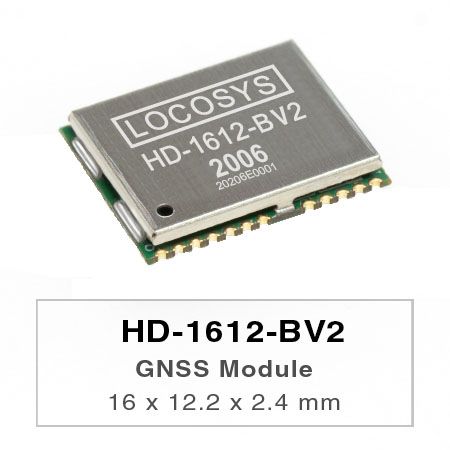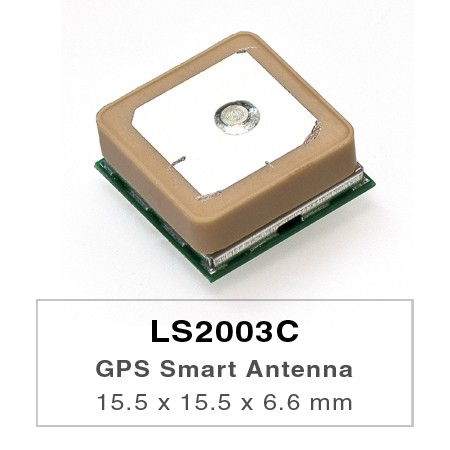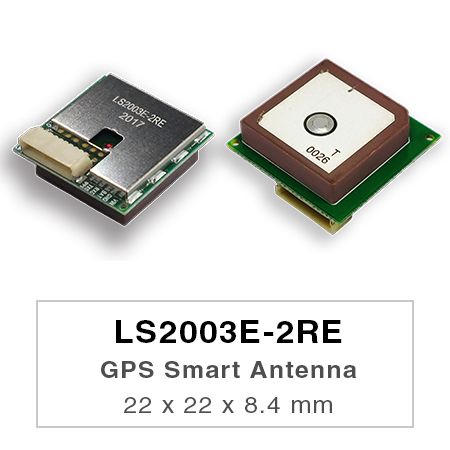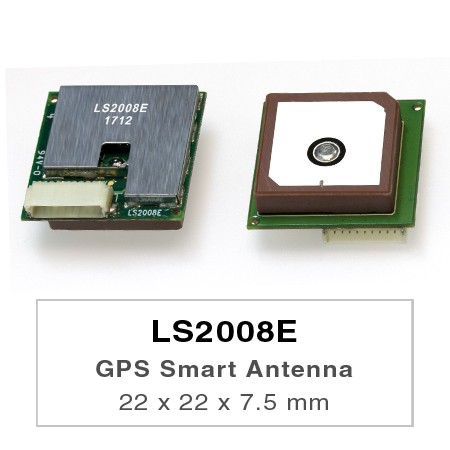MC-1722-T 是一款高性能的 L1 和 L5 雙頻多頻 GNSS 模組,專為定時應用而設計。該模組支持 GPS、GLONASS、北斗(BeiDou)、GALILEO 和 QZSS 的同時接收,以提高可用性和可靠性。
更多
BK-1612-15 是一款支持雙頻和多模式的接收模組。它內建高度集成的 GNSS 接收晶片,支持多頻段和多系統的 cm4f(主頻 350MHz,22nm 技術)芯片,並支持第三代北斗衛星導航系統(BDS-3)。此外,它能夠在所有頻段上追蹤所有全球民用導航系統(GPS、GLONASS、GALILEO、BEIDOU、QZSS 和 SBAS)。
BK-1612-15 模組基於先進的 BDS-3 架構,集成了多頻段和多系統的 GNSS 射頻和基帶。這種新設計的架構使得這顆單晶片在不需要地面增強站的修正數據的情況下,實現了亞米級定位精度,並提高了靈敏度,對抗干擾和多徑效應的能力更強,能在複雜環境中提供強健的服務。
BK-1612-15 模組內含定位引擎,具有高靈敏度、低功耗和快速的 TTFF。其卓越的冷啟動靈敏度使其能夠在弱信號環境下自主獲取、跟蹤並獲得定位解決方案。接收器的卓越跟蹤靈敏度使其在幾乎所有戶外應用環境中保持連續的定位覆蓋。高性能的信號參數搜索引擎每秒可測試 1600 萬個時間頻率假設,提供卓越的信號獲取和 TTFF 速度。
更多
SO-1612-15 是一款雙頻 GNSS 定位接收模組,能夠在所有頻段上追蹤所有全球民用導航系統(BDS、GPS、GLONASS、Galileo、QZSS、IRNSS 和 SBAS)。內建高度集成的 GNSS 接收晶片,支持第三代北斗衛星導航系統(BDS-3)。
SO-1612-15 模組基於先進的 BDS-3 架構,集成了多頻段和多系統的 GNSS 射頻和基帶。這種新設計的架構使得這顆單晶片在不需要地面增強站的修正數據的情況下,實現了亞米級定位精度,並提高了靈敏度,對抗干擾和多徑效應的能力更強,能在複雜環境中提供強健的服務。
SO-1612-15 模組內含 CXD5610GF 定位引擎,具有高靈敏度、低功耗和快速的 TTFF。其卓越的冷啟動靈敏度使其能夠在弱信號環境下自主獲取、跟蹤並獲得定位解決方案。接收器的卓越跟蹤靈敏度使其在幾乎所有戶外應用環境中保持連續的定位覆蓋。
更多
BK-1612-1N 是一款接收模組,支援雙頻並可同時接收 GPS、GLONASS、GALILEO、BEIDOU、QZSS 和 NavIC 多模組。它內建高度集成的接收晶片,支持多頻帶和多系統的 cm4f(主頻350MHz,22nm技術)晶片。此外,它能夠同時追蹤所有全球民用導航系統(GPS、GLONASS、GALILEO、BEIDOU、QZSS、NavIC)在 L1 和 L5 頻段的信號。
BK-1612-1N 模組基於先進的 NavIC 架構,集成了多頻帶和多系統的 GNSS RF 和基帶。這一新設計的架構使得該單晶片可在無來自地面增強站的修正數據下實現亞米級定位精度,並具有更高的靈敏度,提升了抗干擾性和多徑效應的抗性,在複雜環境中提供穩健的服務。
BK-1612-1N 模組具有高靈敏度、低功耗和快速 TTFF(首次定位時間)。其優越的冷啟動靈敏度使其能夠在弱信號環境中自主獲取、跟蹤並確定位置。接收器的出色跟蹤靈敏度使其能在幾乎所有戶外應用環境中持續提供定位覆蓋。高性能的信號參數搜索引擎每秒可測試1600萬個時間頻率假設,提供卓越的信號獲取和 TTFF 速度。
更多
更多
LOCOSYS MC-1010-Vxx 系列是高性能雙頻 GNSS 定位模組,能夠追蹤所有全球民用導航系統。它們採用了 12nm 製程並集成了高效的電源管理架構,實現了低功耗和高靈敏度。此外,支持 L1 和 L5 頻段信號的同時接收,減少了多徑延遲,實現亞米級定位精度。
這些模組支持混合星歷預測,實現更快的冷啟動。其中一種是自生成的星歷預測(稱為 EPOC),無需網絡協助和主機 CPU 的介入。該預測有效期為 3 天,當 GNSS 模組開機並且衛星可用時會自動更新。另一種是伺服器生成的星歷預測(稱為 EPO),該預測來自互聯網伺服器,有效期為 14 天。這兩種星歷預測都存儲在模組的閃存中,冷啟動時間小於 15 秒。
MC-1010-V3x 配合有源天線,可符合 AIS 140 標準中的靈敏度規範。這是設計符合 AIS 140 跟蹤應用的客戶的最佳解決方案。
更多
LOCOSYS MC-1612a-Vxx 是一款高性能雙頻 GNSS 定位模組,能夠追蹤所有全球民用導航系統。該模組採用了 12nm 製程並集成了高效的電源管理架構,實現了低功耗和高靈敏度。此外,支持 L1 和 L5 頻段信號的同時接收,減少了多徑延遲,實現更準確的定位。
該模組支持混合星歷預測,實現更快的冷啟動。其中一種是自生成的星歷預測(稱為 EPOC),無需網絡協助和主機 CPU 的介入。該預測有效期為 3 天,當 GNSS 模組開機並且衛星可用時會自動更新。另一種是伺服器生成的星歷預測(稱為 EPO),該預測來自互聯網伺服器,有效期為 14 天。這兩種星歷預測都存儲在模組的閃存中,實現更快的冷啟動。
MC-1612a-V3b 模組的射頻前端專門設計,以符合 AIS 140 標準中的靈敏度規範。這是設計符合 AIS 140 跟蹤應用的客戶的最佳解決方案。
更多
LOCOSYS HD-1612-BV1 is a high-performance GNSS positioning module that is capable of tracking all global civil navigation systems (GPS, QZSS, GLONASS, BEIDOU and GALILEO).
Besides, it can receive sub-meter level augmentation service from QZSS L1S signal and sends disaster information at 4-second intervals.
The module integrates efficient power management architecture to perform low power and high sensitivity. It is suitable for personal, automotive and marine navigations.
*HD-1612-BV1 supports GPS/GLONASS/GALILEO/BEIDOU/QZSS
更多
LOCOSYS HD-1612-BV2/HD-1612-BV3 are high-performance dual-band GNSS positioning modulesthat are capable of tracking all global civil navigation systems (GPS, GLONASS, BDS, GALILEO, QZSS andIRNSS). They integrate efficient power management architecture to perform low power and high sensitivity.Besides, concurrent reception of L1 and L5 band signals achieves sub-meter position accuracy. They aresuitable for personal, automotive and marine navigations.
The RF front end of HD-1612-BV3 is specifically designed to comply with sensitivity specificationcontained in AIS-140 standard. It is the best solution to those customers that design tracking applications in compliance with AIS-140.
*HD-1612-BV2 supports GPS/GLONASS/GALILEO/BEIDOU/QZSS
*HD-1612-BV3 supports GPS/GALILEO/BEIDOU/QZSS/IRNSS
更多
LS2003C是一個完整的獨立GPS天線模組,包括嵌入式貼片天線和GPS接收器電路。LS2003C 模組使用聯發科GPS 多合一芯片MT3339,可以一次獲取多顆衛星,同時提供快速的首次定位(Time To First Fix) 和低功耗。此外,即使在都市峽谷和茂密的樹葉環境中,它也能為您提供卓越的靈敏度和性能。
該模組支援混合星曆預測,實現更快的冷啟動。一個是自生產的星曆預測(self-generated ephemeris prediction稱為EASY),不需要網絡協助和主機CPU的干預。這有效期最長為3天,GPS模組上電並且衛星可用時不時自動更新。另一個是從互聯網服務器獲取的服務器生成的星曆預測(稱為EPO)。最多14天有效。兩個星曆預測都存儲在板載閃存中,並執行少於15秒的冷啟動時間。
無需在分離的GPS有源天線中需要的RF連接器和同軸電纜即可輕鬆安裝。換句話說,降低成本和大小。另外,通過消除加快上市時間分離式GPS天線與模組之間的RF匹配和穩定性的研發工作。此外,它可以直接由鋰電池供電,無需任何外部電壓常數。因此,LS2003C的微型尺寸和輝煌的性能是將其整合到您的超薄設備中的最佳選擇。
更多
LS2003C-2RE是一個完整的獨立GPS天線模組,包括嵌入式貼片天線和GPS接收器電路。該模組由聯發科GPS最新的MT3337E芯片提供支援一次獲取大量衛星,同時提供快速的第一時間固定和低功耗。此外,即使在都市峽谷和茂密的樹葉環境中,它也能為您提供卓越的靈敏度和性能。該模組支援自我生成軌道預測,EASYTM,實現更快的冷啟動和熱啟動。 EASYTM不需要網絡協助和主機CPU的干預。該預測有效期最長為3天,GPS模組上電且衛星可用時,會自動更新。無需在分離的GPS有源天線中需要的RF連接器和同軸電纜即可輕鬆安裝。換句話說,降低成本和大小。
另外,通過消除分離GPS天線和模組之間的射頻匹配和穩定性的研發工作,加快上市時間。此外,它可以直接由鋰電池供電,無需任何外部穩壓器。因此,LS2003C-2RE的微型尺寸和輝煌的性能是將其整合到您的超薄設備中的最佳選擇。
更多
LS2003D是一個完整的獨立GPS天線模組,包括嵌入式貼片天線和GPS接收機電路。該模組採用聯發科最新的MT3339多合一芯片,可以在其中獲取大量衛星同時提供快速的時間到第一次修復和低功耗。此外,它可以為您提供卓越的敏感性和性能,即使在都市峽谷和茂密的樹葉環境。
該模組支援混合星曆預測,實現更快的冷啟動。一個是自生產的星曆預測(稱為EASY),不需要網絡協助和主機CPU的干預。最多3天有效,GPS模組上電時會自動更新衛星可用。另一個是服務器生成的星曆預測(稱為EPO)互聯網服務器最多14天有效。這兩個星曆預測都存儲在板載閃存中記憶並執行冷啟動時間少於15秒。
無需在分離的GPS中需要的RF連接器和同軸電纜即可輕鬆安裝有源天線。換句話說,降低成本和大小。另外,通過消除加快上市時間分離式GPS天線與模組之間的RF匹配和穩定性的研發工作。此外,它可以直接由鋰電池供電,無任何外部電壓常規。因此,LS2003D的微型尺寸和輝煌的性能是將其整合到您的超薄設備中的最佳選擇。
更多
LS2003D-2RE是一個完整的獨立GPS天線模組,包括嵌入式貼片天線和GPS接收器電路。該模組由聯發科最新的GPS MT3337E芯片提供支援 一次獲取大量衛星,同時提供快速的第一時間固定和低功耗。可為您提供卓越的靈敏度,甚至在城市高樓林立的環境下有絕佳的定位表現。
新模組支援自動生成軌道預測,稱為EASYTM,以實現更快的冷啟動並開始溫暖。 EASYTM不需要網絡協助和主機CPU的干預的。預測有效期最長為3天,GPS模組供電時會自動更新可以使用衛星。
無需在分離的GPS中需要的RF連接器和同軸電纜即可輕鬆安裝有源天線。換句話說,降低成本和大小。另外,通過消除加快上市時間分離式GPS天線與模組之間的RF匹配和穩定性的研發工作。此外,它可以直接由鋰電池供電,無需任何外部穩壓器。因此,LS2003D-2RE的微型尺寸和輝煌的性能是融入您的超薄設備的最佳選擇。
更多
LS2003E是一個完整的獨立GPS天線模組,包括嵌入式貼片天線和GPS接收器電路。該模組採用聯發科GPS最新的MT3339芯片,可以一次獲取大量衛星,同時提供快速的一次性固定和低功耗。此外,即使在都市峽谷和茂密的樹葉環境中,它也能為您提供卓越的靈敏度和性能。
該模組支援混合星曆預測,實現更快的冷啟動。一個是自生產的星曆預測(稱為EASY),不需要網絡協助和主機CPU的干預。這有效期最長為3天,GPS模組上電並且衛星可用時不時自動更新。另一個是從互聯網服務器獲取的服務器生成的星曆預測(稱為EPO)。最多14天有效。兩個星曆預測都存儲在板載閃存中,並執行少於15秒的冷啟動時間。
無需在分離的GPS有源天線中需要的RF連接器和同軸電纜即可輕鬆安裝。換句話說,降低成本和大小。另外,通過消除加快上市時間分離式GPS天線與模組之間的RF匹配和穩定性的研發工作。此外,它可以直接由鋰電池供電,無需任何外部電壓常數。因此,LS2003E的微型尺寸和輝煌的性能是您的超薄設備的最佳選擇。
更多
LS2003E-2RE是一個完整的獨立GPS天線模組,包括嵌入式貼片天線和GPS接收器電路。該模組採用聯發科GPS最新的MT3337E芯片,可以一次獲取大量衛星,同時提供快速的第一時間固定和低功耗。
此外,即使在都市峽谷和茂密的樹葉中,它也能為您提供卓越的敏感度和性能環境。該模組支援自我生成軌道預測,EASYTM,實現更快的冷啟動和熱啟動。 EASYTM不需要網絡協助和主機CPU的干預。該預測有效期最長為3天,GPS模組上電且衛星可用時,會自動更新。
無需在分離的GPS有源天線中需要的RF連接器和同軸電纜即可輕鬆安裝。換句話說,降低成本和大小。另外,通過消除加快上市時間分離式GPS天線與模組之間的RF匹配和穩定性的研發工作。此外,它可以直接由鋰電池供電,無需任何外部電壓常數。因此,LS2003E-2RE的微型尺寸和輝煌的性能是您的超薄設備的最佳選擇。
更多
LS2003J-2RE是一款完整的獨立式GPS智能天線模塊,模塊搭載聯發科
GPS芯片,即使在城市峽谷和茂密的樹葉環境也能為用戶提供卓越的靈敏度和性能。
該模塊包括專為平板電腦設計的嵌入式芯片天線和GPS接收器電路
將整合GPS功能的PC,MID,PND和智能手機。
更多
LS2008E是一個完整的獨立GPS天線模組,包括嵌入式貼片天線和GPS接收器電路。該模組可以同時獲取和跟踪包括GPS,QZSS和Galileo在內的多個衛星系統。 它具有低功耗和小尺寸。 可為您提供卓越的靈敏度,甚至在城市高樓林立的環境下有絕佳的定位表現。
無需在分離的GPS有源天線中需要的RF連接器和同軸電纜即可輕鬆安裝。 換句話說,降低成本和大小。 另外,通過消除加快上市時間分離式GPS天線與模組之間的RF匹配和穩定性的研發工作。 其深遠的能力滿足汽車導航以及其他基於位置的應用的敏感度要求。
更多
LS20030 ~ 2系列產品是完整的GPS天線接收器,包括嵌入式天線和GPS接收器電路,專為廣泛的OEM系統應用而設計。該產品基於使用聯發科芯片解決方案的LOCOSYS 66通道GPS SMD型接收機MC-1513中發現的成熟技術。
GPS天線一次可以獲得多達66顆衛星,同時提供快速的第一時間固定,一秒鐘的導航更新和低功耗。即使在都市峽谷和茂密的樹葉環境中,它也能為您提供卓越的靈敏度和性能。其深遠的能力滿足汽車導航以及其他基於位置的應用的敏感性要求。
該模組支援混合星曆預測,以實現更快的冷啟動。一種是自生成星曆預測,不需要網絡協助和主機CPU的干預。這有效期最長為3天,GPS模組上電並且衛星可用時不時自動更新。另一個是從互聯網服務器獲得的服務器生成的星曆預測。最多14天有效。兩個星曆預測都存儲在板載閃存中,並執行少於15秒的冷啟動時間。
更多
LS20030 ~ 2-2RE系列產品是完整的GPS天線模組,包括嵌入式天線和GPS接收器電路,專為廣泛的OEM系統應用而設計。 產品是基於在LOCOSYS 66通道GPS貼片式接收機MC-1513-2RE中發現的成熟技術使用聯發科 MT3337E芯片解決方案。 GPS天線將在提供時一次獲取大量衛星快速的一次性修復和低功耗。 此外,它可以為您提供卓越的靈敏度表現甚至在都市峽谷和茂密的樹葉環境中。 其深遠的能力達到了汽車導航以及其他基於位置的應用的靈敏度要求。
更多
LS2003xU 系列產品是完整的 GPS 智能天線接收器,包括嵌入式天線和 GPS 接收器電路,旨在滿足廣泛的 OEM 系統應用需求。該產品基於 LOCOSYS 66 通道 GPS SMD 類型接收器 MC-1612 的成熟技術,並使用 MediaTek 晶片解決方案。該 GPS 智能天線可同時接收最多 66 顆衛星,並提供快速的首修時間、一秒鐘導航更新和低功耗。即使在城市峽谷和密集樹葉環境中,它也能提供卓越的靈敏度和性能。其遠程能力滿足車載導航以及其他基於位置的應用的靈敏度要求。
此模組支持混合星曆預測以實現更快的冷啟動。這些預測包括自生成星曆預測,無需網絡協助或主機 CPU 干預。這種預測有效期為最多 3 天,並在 GPS 模組啟動且衛星可用時自動更新。另一種是從互聯網服務器獲取的伺服器生成星曆預測,有效期為最多 14 天。這兩種星曆預測都儲存在板載閃存中,並實現了冷啟動時間少於 15 秒。
更多
LS2003xU-2RE 系列產品是完整的 GPS 智能天線接收器,包含嵌入式天線和 GPS 接收器電路,專為廣泛的 OEM 系統應用設計。該產品基於 LOCOSYS 66 通道 GPS SMD 類型接收器 MC-1612-2RE 的成熟技術,並使用 MediaTek 晶片解決方案。該 GPS 智能天線可同時接收最多 66 顆衛星,並提供快速的首修時間、一秒鐘導航更新以及低功耗。即使在城市峽谷和密集樹葉環境中,它也能提供卓越的靈敏度和性能。其遠距離能力滿足車載導航及其他基於位置的應用的靈敏度需求。
這款 GPS 智能天線支持自生成星曆預測技術 EASYTM,以實現更快的冷啟動和暖啟動。EASYTM 無需網絡協助或主機 CPU 介入。該預測有效期為最多 3 天,並且在 GPS 模組啟動且衛星可用時會自動更新。
更多
LS2003J-G 是一款完整的獨立 GNSS 智能天線模組,該模組由 MediaTek GNSS 晶片驅動,即使在都市峽谷和密集的樹林環境中,仍能提供用戶卓越的靈敏度和性能。
此模組包含內建晶片天線與 GNSS 接收電路,專為平板電腦、MID、PND 和智慧型手機設計,適合用來集成 GNSS 功能。
更多
LS2003C-G是一個完整的獨立GNSS天線模組,包括嵌入式貼片天線和GNSS接收器電路。該模組可同時採集和跟踪多顆衛星包括GPS,GLONASS,GALILEO,QZSS和SBAS的星座。它具有低功耗和小尺寸。此外,即使在城市峽谷和茂密的樹葉環境中,它也能為您提供卓越的靈敏度和性能。
該模組支援混合星曆預測,實現更快的冷啟動。一個是自生產的星曆預測(稱為EASY),不需要網絡協助和主機CPU的干預。這最多可以持續3天,GNSS模組上電時會自動更新衛星可用。另一個是服務器生成的星曆預測(稱為EPO)互聯網服務器最多14天有效。這兩個星曆預測都存儲在板載閃存中記憶並執行冷啟動時間少於15秒。
無需在分離的GNSS中需要的RF連接器和同軸電纜即可輕鬆安裝有源天線。換句話說,降低成本和大小。另外,通過消除加快上市時間分離GNSS天線和模組之間的RF匹配和穩定性的研發工作。此外,它可以直接由鋰電池供電,無需任何外部電壓常規。因此,LS2003C-G的微型尺寸和輝煌的性能是融入您的超薄設備的最佳選擇。
更多
LS2003D-G是一個完整的獨立GNSS天線模組,包括嵌入式貼片天線和GNSS接收器電路。該模組可同時採集和跟踪多顆衛星包括GPS,GLONASS,GALILEO,QZSS和SBAS的星座。它具有低功耗和小尺寸。此外,即使在城市峽谷和茂密的樹葉環境中,它也能為您提供卓越的靈敏度和性能。
該模組支援混合星曆預測,實現更快的冷啟動。一個是自生產的星曆預測(稱為EASY),不需要網絡協助和主機CPU的干預。這最多可以持續3天,GNSS模組上電時會自動更新衛星可用。另一個是服務器生成的星曆預測(稱為EPO)互聯網服務器最多14天有效。這兩個星曆預測都存儲在板載閃存中記憶並執行冷啟動時間少於15秒。
無需在分離的GNSS中需要的RF連接器和同軸電纜即可輕鬆安裝有源天線。換句話說,降低成本和大小。另外,通過消除加快上市時間分離GNSS天線和模組之間的RF匹配和穩定性的研發工作。此外,它可以直接由鋰電池供電,無需任何外部電壓常規。因此,LS2003D-G的微型尺寸和輝煌的性能是融入您的超薄設備的最佳選擇。
更多
 台灣卓越無人機聯盟參訪大辰科技領先企業 聚焦全球定位技術與無人機應用
台灣卓越無人機聯盟參訪大辰科技領先企業 聚焦全球定位技術與無人機應用 LOCOSYS 大辰科技參加新北電動車產業鏈博覽會 展現領先智慧定位技術
LOCOSYS 大辰科技參加新北電動車產業鏈博覽會 展現領先智慧定位技術 LOCOSYS 大辰科技 推出全新高性能 SONY (GNSS/RTK) 全球衛星定位模組
LOCOSYS 大辰科技 推出全新高性能 SONY (GNSS/RTK) 全球衛星定位模組

